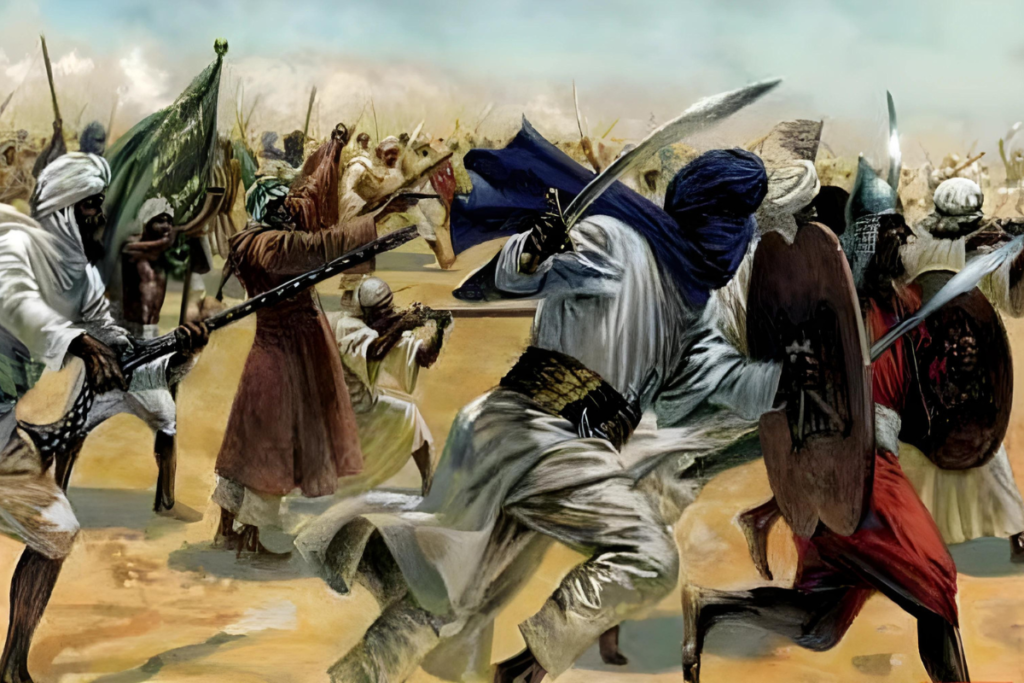
1.Mahmud of Ghazni
Towards the close of the ninth century AD, the vast Arab empire broke up and the Turks who got the upper hand over the Khalifas of Baghdad, established many independent principalities. One such Turk state was founded by Alapigin with Ghazni as his capital in about AD 933.
In those days, Punjab and the North-West of India were ruled by Jaipal of the Shahiya dynasty (Hindustani).
Subuktigin, the ruler of Ghazni of that period, fought with Jaipla and defeated him.
Mahmud Ghaznavi was the eldest son of Subuktigin, born in AD 971 and ascended the throne in AD 998.
For India, the only memory of Mahmud is that of a plunderer and destroyer of temples. Mahmud is said to have made 17 raids into India. The initial raids were directed against the Hindustani ruler, Jaipal again was defeated by Mahmud.
His son Anandapala succeeded to the throne. A decisive battle between Mahmud and Anandapala was fought in AD 1008-09 at Waihind during his sixth expedition.
In other expeditions, Mahmud plundered Nagarkot, Thaneshwar, Kannauj, Mathura and Somnath
2.He plundered Somnath temple in AD 1025 (his sixteenth raid)
In AD 1026, Mahmud defeated the Jats. He died in AD 1030.
3.The objective of Mahmud’s expeditions was to plunder and loot. He was not interested in expanding his empire to India.
Quick Digest
Mahmud is considered a hero of Islam by mediaeval Muslim historians because of his stout Defence against the Central Asian Turkish tribal invaders.
Secondly, because he was closely associated with the renaissance of the Iranian spirit.
4.A high water mark in the Iranian renaissance was reached with Firdausi’s Shah Namah.
He patronised three persons, contemporary to him:
Firdausi (court poet), Alberuni (scholar) and Utbi ( court historian)
Alberuni wrote ‘kitab-ul-Hind’.
Muhammad Ghori
The Ghaznavi state was no longer a powerful state after Mahmud Ghazni. His successors were weak which resulted in the emergence of a Seljuk empire. But towards the middle of the 12th century, another group of Turkish tribes shattered the power of the Seljuk Turks.
The power of the Ghurids increased under Sultan Alauddin, who earned the title the World burner, because he ravaged Ghazni and burnt it into the ground.
In 1173, Muizzudin Muhammad at Ghazni, while his elder brother was ruling at Ghur. Muizzudin Muhammad conquered Multan and Kutch.
In 1173, he attempted to penetrate into Gujarat by marching across the Rajputana desert, but was completely rooted out by the Gujarat ruler.
He realised the necessity of creating a suitable base in Punjab before venturing upon the conquest of India. He conquered Peshawar, Lahore and Sialkot.
At that period, the Chauhan power had been steadily growing. Chauhans had been steadily growing. Chauhans captured Delhi from the Tomars around the middle of the century.
At the age of 11, Prithviraj ascended the throne at Ajmer and began a career of conquest. He invaded the Chandellas of Bundelkhand in a battle near Mahoba.
Both Prithviraj and Muhammad Ghori’s attention towards the Punjab and Ganga valley brought the two ambitious rulers into conflict.
1.In the First Battle of Terrain (1191) the Ghori forces were completely rooted out by Prithviraj.
2.It is said that Jaichand, the ruler of Kannauj (Gahadavala Kingdom) did not help Prithviraj during the Second battle of Terrain because Prithviraj had abducted Jaichand's daughter Sanyogita, who was in love with him.
3.Prithviraj Raso, written by court poet of Prithviraj, Chand Bardai, depicts the life story of Prithviraj and his love story.
4.Battle of Terrain
The Second Battle of Terrain (1192) is regarded as one of the turning points in Indian history. The better organised and well prepared Turkish force defeated the Indian forces.
Prithviraj was defeated by Muhammad Ghori. Prithviraj was allowed to rule over Ajmer for some time. But was executed on a charge of conspiracy after some time.
The defeat laid the foundation of Muslim rule in India.
5.Later on in 1194, Jaichand of Kannauj was also defeated at the Battle of Chandawar.
Bakhtiyar Khilji, one of Ghori’s commanders, annexed Bihar and Bengal and destroyed Nalanda and Vikramshila Universities.
Muhammad Ghori died in AD 1206, leaving the charge with Qutub-ud-din Aibak.
The Sultanate of Delhi had five ruling dynasties with 34 kings.
6.Causes of the Turkish Success
Political disunity among Rajput and internal rivalries.
No Central Government.
Unguarded Frontiers, even after repeated attacks.
Organised military and ambitious Turkish invaders.
